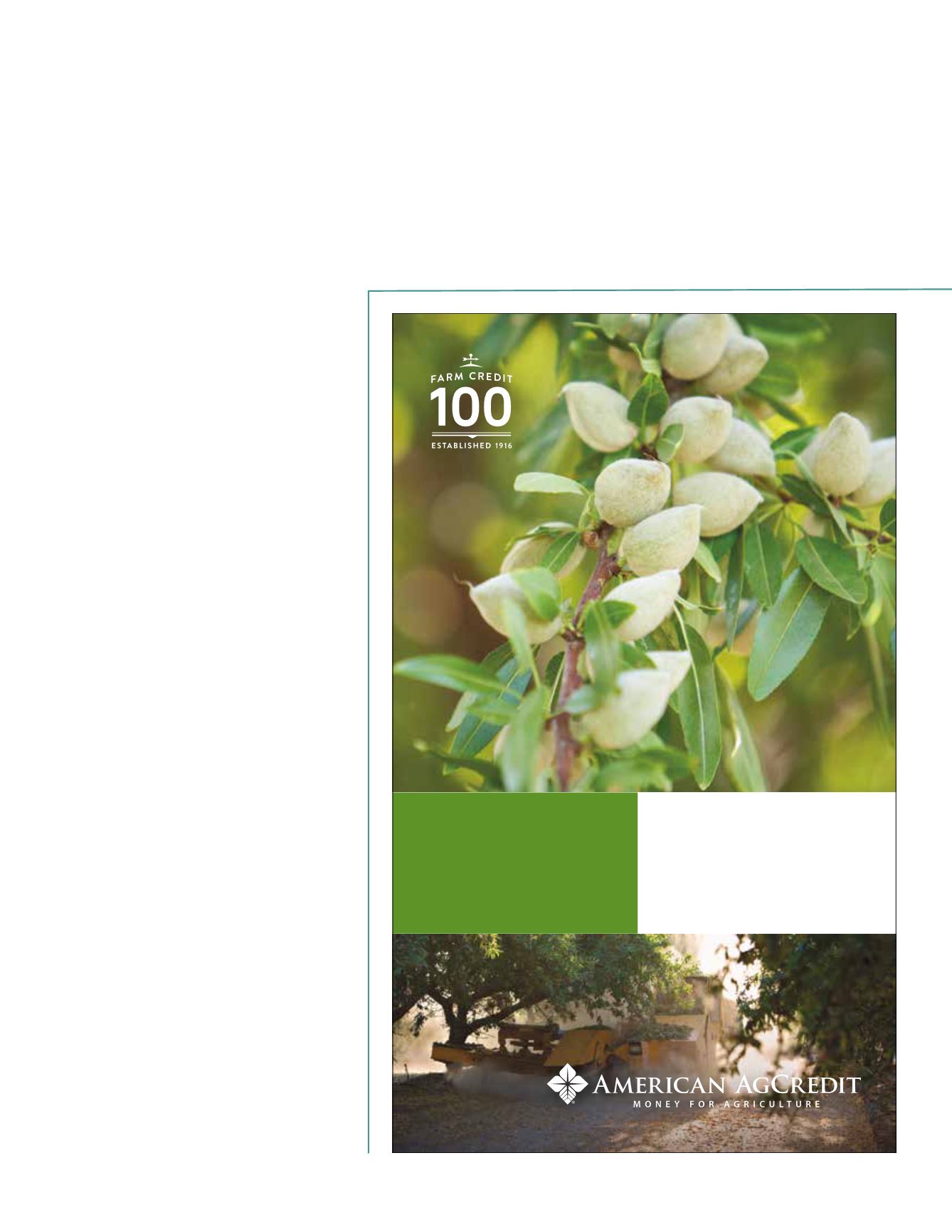
JANUARY | FEBRUARY 2016
Almond Facts
39
mancozeb treatments are highly effective. To validate this,
field trials will be conducted again in the coming season.
Field trials on the management of the disease were conducted
that included dormant and in-season applications. Late-
dormant treatments (late January) with copper, copper-
mancozeb, or other combinations significantly reduced the
incidence of disease, but not early dormant treatments that
were applied in mid-November or mid-December 2013. In-
season treatments were most effective when timed around
rain events and before temperatures
started to increase above 77°F (25°C) in
the springtime. Copper treatments were
applied by halving the rate with each
successive application (e.g., 1, 0.5, 0.25
lb MCE/A – metallic copper equivalent
/ acre). No copper phytotoxicity was
observed after four applications when
copper rates were successively reduced.
All copper products tested significantly
reduced disease. Strains of the pathogen
collected and evaluated to date were all
rated as copper-sensitive. Among products
evaluated, however, Kocide 3000, Badge
X2, Champ-Ion2+, and Cuprofix were
more effective than Cueva.
Proper tree planting
When planting a new orchard, it is
important to take the proper precautions
to avoid tree loss. Trees should be planted
as soon as possible after arrival from the
nursery. Prior to delivery, make sure the
field is prepared, which includes ensuring
that soil fumigants have completely
dissipated, soil clods are broken down and
workable, and large amounts of organic
material (e.g. grass clippings, compost) are
not present in the planting areas. Berms
are recommended for most soils to prevent
crown infections by Phytophthora.
Berms may not be needed in soils with
high infiltration rates. If planned, berms
should be pulled prior to tree planting. Do
not pull berms as an after-thought: soil
covering the graft union will increase the
risk of Phytophthora.
To prevent root drying, keep the roots
moist and cover with a tarp when being
transported within the field. Do not prune
tree roots unless they are broken. Although the efficacy is
variable, tree roots should be treated with Galltrol or similar
product to prevent infection by crown gall. This is done by
making a suspension of the provided bacteria with water and
either dipping the tree roots into the suspension or spraying
the suspension onto the tree’s roots.
When planting, dig a large enough hole to fit the entire root
system without bending or wrapping. Forcing trees into
planting holes causes “J-rooting” and increases the chance of
continued on next page >>


